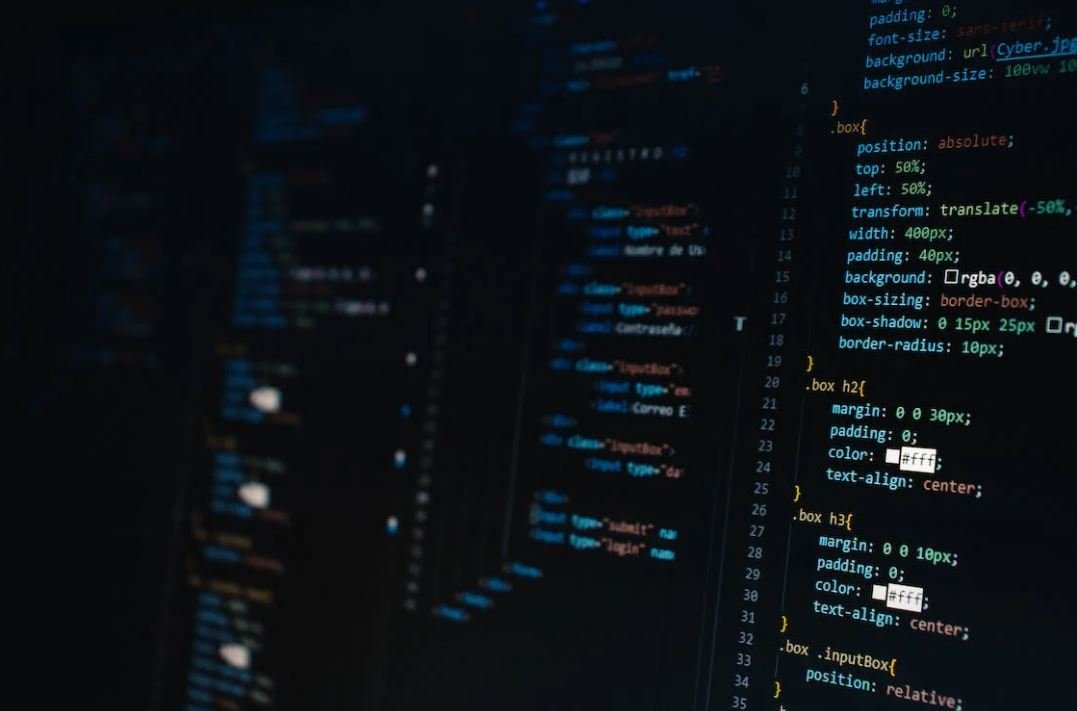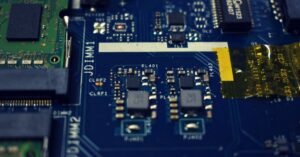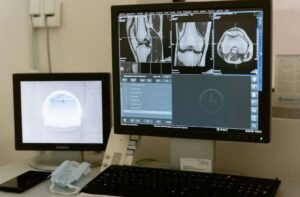AI Versus Automation
In the world of technology, two terms that often come up in discussions about the future are AI (Artificial Intelligence) and Automation. While these terms are occasionally used interchangeably, they actually refer to distinct concepts with different implications and applications. Understanding the differences between AI and Automation is crucial for grasping the potential they hold and how they are impacting various industries.
Key Takeaways:
- AI and automation are distinct concepts, each with unique implications.
- AI involves mimicking human intelligence and decision-making while automation focuses on reducing human involvement in repetitive tasks.
- Both AI and automation have the potential to significantly transform industries and enhance efficiency.
**Artificial Intelligence (AI)** is a field of computer science that focuses on the development of intelligent machines that can perform tasks that typically require human intelligence. AI systems are designed to perceive and analyze their environment, learn from experiences, and make decisions or take actions based on that information. Powered by algorithms and large amounts of data, AI enables machines to simulate human cognition and behavior. AI applications range from voice assistants like Siri and Alexa to self-driving cars and advanced predictive analytics software.
*AI systems have the potential to revolutionize industries by automating complex tasks and providing data-driven insights in real-time.*
**Automation,** on the other hand, is the use of technology to perform repetitive or mundane tasks without human intervention. It involves the creation of systems or machines that can operate with minimal or no human involvement. Unlike AI, automation focuses on streamlining processes and reducing human error by leveraging technology. Examples of automation include manufacturing assembly lines, email autoresponders, and chatbots.
*Automation allows businesses to increase efficiency, speed, and accuracy in tasks that don’t require human decision-making.*
While both AI and automation aim to enhance efficiency and productivity, they differ in their core functions and capabilities. AI is highly dynamic, enabling machines to learn and adapt based on available data, while automation typically follows pre-programmed instructions. AI can handle complex decision-making and is constantly learning and improving, while automation focuses on executing predefined tasks with consistency and precision. However, the lines between AI and automation can sometimes blur as AI is often used to power automation systems.
*The combination of AI and automation can optimize productivity and decision-making, leveraging the strengths of both approaches.*
The Impact of AI and Automation on Industries
The application of AI and automation across industries is transforming how businesses operate and opening up new opportunities. Here are three sectors where AI and automation are making significant impacts:
| Industry | AI | Automation |
|---|---|---|
| Manufacturing | AI-powered robots are streamlining production lines and improving quality control. | Automated processes increase speed and efficiency in assembly operations. |
| Healthcare | AI enables accurate diagnosis and personalized treatment plans based on patient data analysis. | Automated systems manage administrative tasks, allowing healthcare professionals to focus on patient care. |
| Transportation | AI enhances autonomous vehicles’ capabilities, improving safety and optimizing routes. | Automation of logistics and supply chain processes reduces errors and increases efficiency. |
*The integration of AI and automation in these industries leads to improved productivity, cost-efficiency, and better customer experiences.*
Moreover, the adoption of AI and automation raises concerns about the potential displacement of jobs. While automation can lead to the reduction of certain repetitive jobs, it simultaneously opens up new roles related to technology maintenance and development. AI, with its ability to process vast amounts of data and draw insights, complements human decision-making rather than replacing it. The shift towards AI and automation requires organizations and employees to adapt and acquire new skills that embrace technology.
*Balancing technological advancements with workforce reskilling is crucial for successfully navigating the AI and automation revolution.*
The Future of AI and Automation
As technology continues to advance, AI and automation are set to play increasingly significant roles across industries. The integration of AI with automation will lead to more sophisticated and adaptable systems that can improve efficiency, accuracy, and decision-making. Companies that embrace this technological evolution are likely to gain a competitive edge in their respective markets.
*The future holds great potential as AI and automation create new avenues for growth and innovation.*

Common Misconceptions
Misconception 1: AI and automation are the same thing
One of the most common misconceptions is that artificial intelligence (AI) and automation are interchangeable terms. While they are related, they are not the same thing.
- AI involves the development of computer systems that can perform tasks requiring human intelligence.
- Automation, on the other hand, refers to the use of technology to automate processes or tasks that were previously done by humans.
- While AI can be a component of automation, automation does not necessarily involve AI.
Misconception 2: AI will replace humans in the workforce entirely
Another misconception is that AI will completely replace humans in the workforce, rendering many jobs obsolete. While AI has the potential to automate certain tasks, it is unlikely to completely eliminate the need for human involvement in most industries.
- AI can automate repetitive and mundane tasks, allowing humans to focus on more complex and creative work.
- AI can enhance productivity and efficiency but cannot replicate the intricate skills, emotions, and critical thinking capabilities of humans.
- Instead of replacing jobs, AI is more likely to augment human capabilities and create new roles and opportunities.
Misconception 3: AI is infallible and unbiased
Many people assume that AI systems are infallible and completely unbiased. However, this is far from the truth.
- AI systems are created by humans and can inherit the biases and limitations of their human creators.
- AI algorithms need vast amounts of data to learn from, and if the data is biased or incomplete, the AI can perpetuate or amplify those biases.
- Ensuring fairness and avoiding biased outcomes require careful design, diverse representation, and continuous monitoring of AI systems.
Misconception 4: AI is purely a futuristic concept
There is a misconception that AI is only a futuristic concept that has no real-world applications at present. However, AI is already prevalent in many aspects of our lives.
- AI is present in speech recognition systems, recommendation algorithms, virtual assistants, and chatbots that we interact with on a daily basis.
- AI is used in industries like healthcare, finance, transportation, and manufacturing to optimize processes and make data-driven decisions.
- AI-enabled technologies are continuously evolving, and their impact will continue to grow in various sectors in the coming years.
Misconception 5: AI and automation will lead to job scarcity
One of the common fears associated with AI and automation is that they will lead to widespread job scarcity and unemployment. However, historical evidence suggests otherwise.
- While AI and automation do displace certain jobs, new jobs are often created as a result of these technologies.
- In the past, technological advancements have consistently led to the creation of new industries and job opportunities.
- AI and automation have the potential to increase productivity, which can result in economic growth and the creation of new jobs.

Introduction
This article compares the capabilities and impact of Artificial Intelligence (AI) and Automation. AI refers to the development of computer systems that can perform tasks that typically require human intelligence, such as speech recognition, decision-making, and problem-solving. On the other hand, Automation involves the use of machines and technology to perform tasks with minimal human intervention. Both AI and Automation have revolutionized industries and are a significant part of our modern world. The following tables present various aspects, examples, and impacts related to AI and Automation.
Table: AI Applications in Healthcare
AI has made significant advancements in the healthcare industry, improving diagnostics, treatment plans, and patient care.
| AI Application | Description | Impact |
|——————–|——————————————————–|———————————————————————————————————————————————————|
| Medical Imaging | AI algorithms assist in analyzing medical images | Increased accuracy in diagnosing diseases and conditions |
| Drug Discovery | AI helps identify potential drugs and predict side effects | Accelerates the drug development process and introduces new treatments |
| Surgical Assistance| AI-driven robotic systems assist surgeons | Improved precision in surgeries, reduced risk, and enhanced outcomes |
| Virtual Nursing | AI chatbots provide patient support and education | Increased access to healthcare information, reduced burden on healthcare professionals, and improved patient engagement |
Table: Automation in Manufacturing
Automation has revolutionized the manufacturing industry, increasing production efficiency and optimizing workflows.
| Automation | Description | Impact |
|————————-|——————————————————–|———————————————————————————————————————————————————|
| Robotic Assembly | Robots perform repetitive assembly tasks | Increased productivity, faster production cycles, and reduced error rates |
| Automated Quality Control | Vision systems inspect products for defects | Improved product quality, reduced inspection time, and enhanced customer satisfaction |
| Smart Inventory Systems| Automated systems manage inventory and supply chain | Efficient stock management, reduced costs, and improved order fulfillment |
| Machine Learning in Maintenance| Predictive analysis for machine maintenance | Minimized downtime, enhanced equipment lifespan, and optimized maintenance schedules |
Table: AI-Assisted Personal Assistants
AI-powered personal assistants have become integral parts of our daily lives, allowing us to manage tasks and access information easily.
| Personal Assistant | Description | Impact |
|———————|——————————————————–|———————————————————————————————————————————————————|
| Apple Siri | Voice-activated personal assistant on Apple devices | Hands-free information retrieval, task management, and device control |
| Amazon Alexa | Voice-controlled personal assistant for smart homes | Integration with smart home devices, voice-activated controls, and access to a vast range of services and information |
| Google Assistant | AI-powered assistant across multiple devices | Seamless integration with Google services, voice recognition capabilities, and personalized assistance |
| Microsoft Cortana | Microsoft’s virtual assistant across various platforms | Integration with Microsoft applications, personalized recommendations, and voice-enabled productivity tools |
Table: Automation in Transportation
Automation has transformed the transportation industry, enhancing efficiency, safety, and reducing human error.
| Automated Transportation | Description | Impact |
|————————–|——————————————————–|———————————————————————————————————————————————————|
| Autonomous Vehicles | Self-driving cars and trucks | Increased road safety, reduced traffic congestion, and optimized fuel consumption |
| Automated Air Traffic Control | AI in managing air traffic | Enhanced airspace management, minimized human errors, and efficient flight routing |
| Robotic Warehouse Systems | Automated systems for order fulfillment and logistics | Faster and error-free order processing, reduced labor costs, and improved supply chain management |
| Smart Traffic Management | Intelligent systems for traffic control and optimization | Reduced congestion, efficient traffic flow, and improved transportation infrastructure |
Table: AI in Financial Services
AI has reshaped the financial services industry, improving customer experiences, fraud detection, and decision-making.
| AI in Finance | Description | Impact |
|————————|——————————————————–|———————————————————————————————————————————————————|
| Algorithmic Trading | AI-driven computer programs for stock market trades | Improved trading speed, accuracy, and profit-making strategies |
| Chatbot Customer Support | AI bots assist customers with financial inquiries | 24/7 support, instant responses, and personalized customer assistance |
| Fraud Detection | AI algorithms identify suspicious financial activities | Enhanced security, reduced fraud risks, and real-time detection of fraudulent transactions |
| Risk Assessment | AI models analyze financial data for risk evaluation | Improved decision-making, accurate risk assessments, and personalized investment recommendations |
Table: Automation in Customer Service
Automation has revolutionized customer service, allowing businesses to provide efficient support and streamline workflows.
| Automated Customer Service | Description | Impact |
|—————————-|——————————————————–|———————————————————————————————————————————————————|
| AI Chatbots | Virtual assistants handle customer inquiries | Round-the-clock support, immediate responses, and faster query resolution |
| Interactive Voice Response (IVR)| Automated phone system for customer calls | Efficient call routing, personalized response options, and reduced waiting times |
| Social Media Automation | AI tools manage social media interactions | Streamlined customer engagement, easy management of inquiries and complaints, and improved brand reputation |
| Robotic Process Automation| Software robots perform routine customer service tasks | Increased process efficiency, reduced manual errors, and improved customer satisfaction |
Table: AI in Education
AI-driven technologies are transforming education, facilitating personalized learning and improving administrative tasks.
| AI in Education | Description | Impact |
|————————-|——————————————————–|———————————————————————————————————————————————————|
| Intelligent Tutoring Systems | AI-powered systems for personalized learning | Adaptive learning experiences, tailored content delivery, and improved student engagement |
| Automated Grading | AI algorithms assess and grade assignments | Faster grading turnaround, reduced manual workload for teachers, and consistent evaluation standards |
| Virtual Reality (VR) in Education| AI-based VR applications for immersive learning | Enhanced subject understanding, engagement, and interactive learning experiences |
| Predictive Analytics | AI models analyze student data for performance insights | Early identification of struggling students, personalized interventions, and improved academic outcomes |
Table: Automation in Agriculture
Automation has revolutionized farming practices, enhancing productivity, crop yield, and reducing manual labor.
| Automated Agriculture | Description | Impact |
|————————-|——————————————————–|———————————————————————————————————————————————————|
| Robotic Harvesting | Automated systems for picking fruits and vegetables | Increased productivity, reduced labor costs, and minimized crop damage |
| Precision Farming | AI and sensor-based systems optimize crop management | Efficient resource utilization, reduced environmental impact, and improved crop yields |
| Drone-based Crop Monitoring | Drones for aerial surveillance and analysis | Early disease detection, faster crop evaluation, and improved crop health monitoring |
| Intelligent Irrigation | Automation in irrigation systems for optimized water usage | Reduced water waste, improved crop health, and minimal manual intervention |
Conclusion
Artificial Intelligence (AI) and Automation have transformed numerous industries, enabling enhanced efficiency, accuracy, and innovation. In healthcare, AI assists in diagnosis, drug discovery, and patient care. Automation in manufacturing optimizes production and quality control. AI-powered personal assistants, such as Siri and Alexa, streamline daily tasks. Automation in transportation improves safety and logistics. AI revolutionizes financial services, customer support, education, and agriculture. The integration of AI and Automation presents a dynamic future, promising continued progress and growth across various sectors.
Frequently Asked Questions
Q: What is the difference between AI and automation?
A: AI refers to the development of intelligent machines or systems that can perform tasks requiring human intelligence, whereas automation involves using technology to automate repetitive or manual tasks without requiring human intervention.
Q: How does AI work?
A: AI systems use a combination of machine learning, natural language processing, and other techniques to analyze large amounts of data, learn from patterns, make decisions, and perform tasks that typically require human intelligence.
Q: What are some examples of AI applications?
A: AI is used in various domains, such as virtual assistants (e.g., Siri, Alexa), autonomous vehicles, fraud detection systems, recommendation engines, chatbots, and medical diagnosis systems.
Q: What are the benefits of automation?
A: Automating tasks can increase efficiency, reduce errors, save time and costs, improve accuracy and consistency, and allow humans to focus on more complex and strategic activities.
Q: Are AI and automation related?
A: While AI and automation can be used together, they are distinct concepts. AI can enable automation by providing intelligent capabilities for automated systems, but automation can exist without AI by following predefined rules or sequences of actions.
Q: Can AI replace human jobs?
A: AI has the potential to automate certain job tasks, but it is unlikely to completely replace human jobs. Instead, it is more likely to augment human capabilities, improve productivity, and create new job opportunities.
Q: Is AI more advanced than automation?
A: AI represents a subset of automation that involves intelligent decision-making and learning capabilities. While AI is a more advanced form of automation, automation can also refer to simpler, rule-based processes without adaptive or intelligent components.
Q: How can AI and automation benefit businesses?
A: AI and automation can enhance business operations by streamlining processes, improving efficiency, reducing errors, enabling predictive analytics, enhancing customer experiences, and driving innovation.
Q: Are there any risks or challenges associated with AI and automation?
A: Some concerns include potential job displacement, ethical considerations, data privacy and security issues, biases in AI algorithms, and the need for ongoing monitoring and governance to ensure responsible and safe use of AI and automated systems.
Q: Can AI and automation work together for better outcomes?
A: Absolutely! By combining AI and automation, businesses can leverage intelligent decision-making capabilities while automating repetitive or manual tasks, leading to improved efficiency, accuracy, and productivity.




